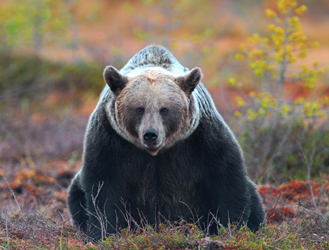Thousands of interactions occur between people and large carnivores with no human injuries or fatalities. However, the numbers tell that since the 1950s, six large carnivores (brown bears, black bears, polar bears, cougars, wolves and coyotes in North America, and brown and polar bears in Europe -Scandinavia and Spain-) have been involved in 700 attacks on humans in North America and Europe. The number of people engaging in outdoor leisure activities in areas inhabited by large carnivores has increased over the past few decades, which increases the probability of an encounter with a large carnivore. However, a key factor triggering the observed increase in the number of attacks is inappropriate human behaviour when sharing the landscape with large carnivores. The results of this study show that half of the attacks were the consequence of inappropriate human behaviours: an increasing number of people is frequently engaging in risk-enhancing behaviours that can increase the probability of a risky encounter and a potential attack. The most common observed human behaviours triggering an attack were leaving children unattended, walking an unleashed dog and jogging at dusk/night. Understanding the circumstances associated with large carnivore attacks is useful to reduce them. The examples provided by the numerous cases of children injured/killed while left unattended by their parents, attacks on people jogging/walking alone at twilight and during hunting, should make us reflect on our responsibilities. informacion[at]ebd.csic.es: Penteriani et al (2016) Human behaviour can trigger large carnivore attacks in developed countries. Sci Rep 6: 20552 doi:10.1038/srep20552
www.nature.com/articles/srep20552

 Las altas temperaturas están provocando que las lagunas y las marismas de Doñana pierdan agua rápidamente
Las altas temperaturas están provocando que las lagunas y las marismas de Doñana pierdan agua rápidamente




